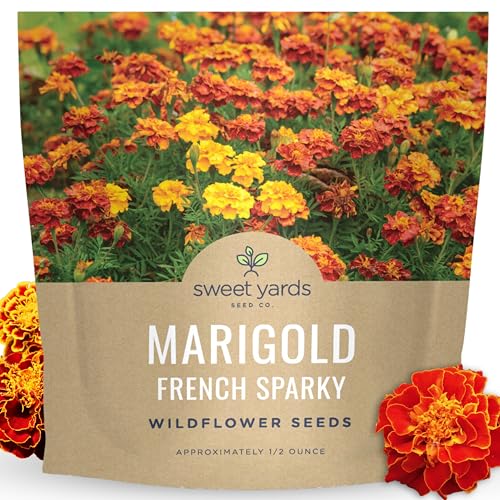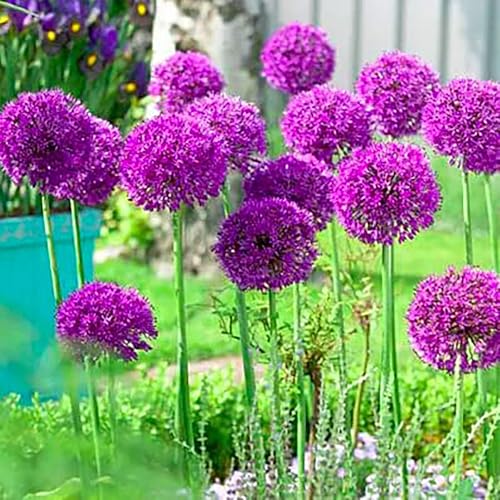Tired of moles wrecking your lush lawn? These 7 humane methods will keep them at bay, say pest control experts
These furry foes can ruin an immaculately tended yard as they tunnel underneath in pursuit of food

Chiana Dickson
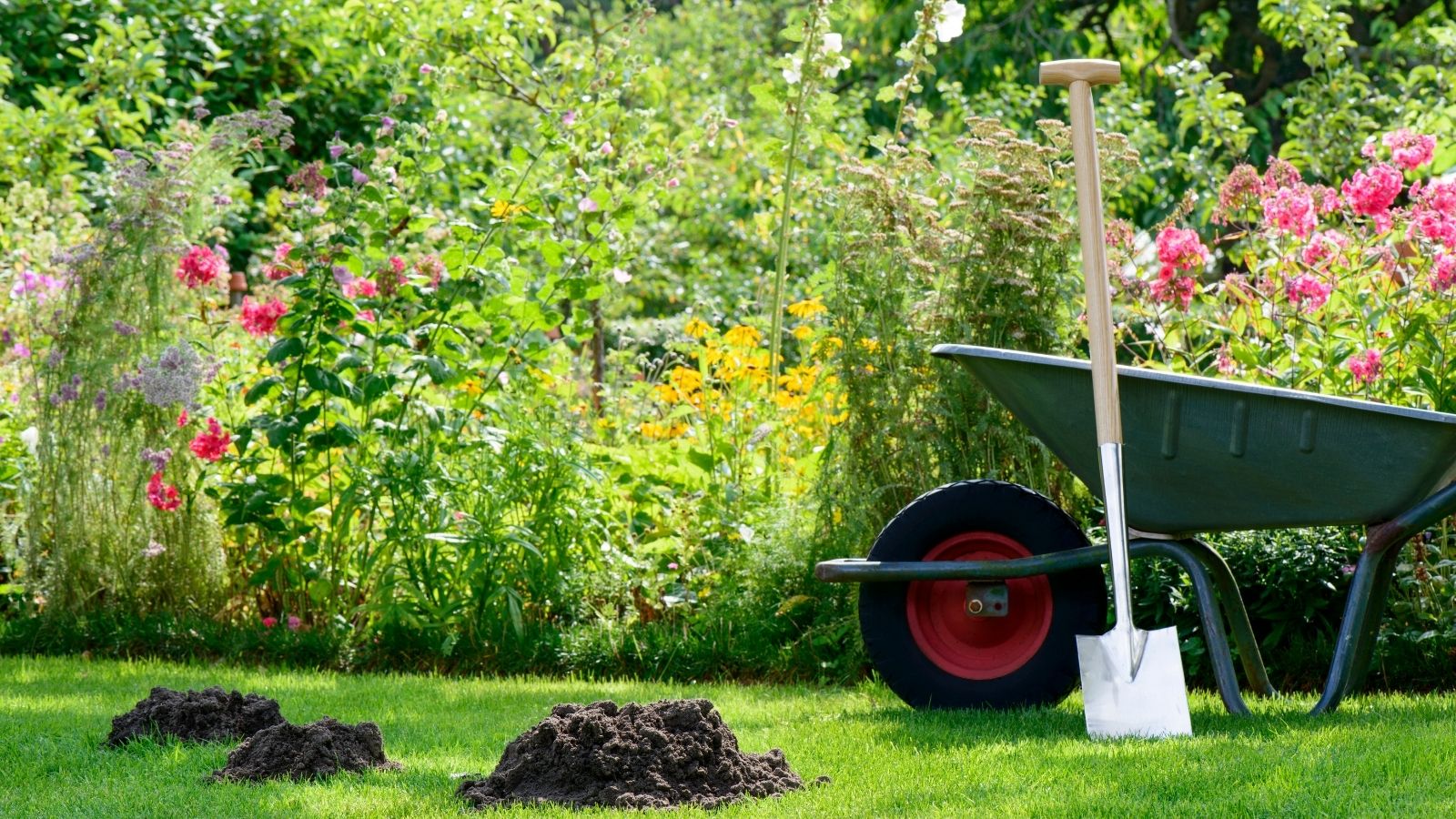
Industrious moles are the enemy of lawn lovers. These deceptively cute-looking critters can turn grass that’s as manicured as the greens on the first day of The Masters into a lumpy, bumpy nightmare.
These determined diggers can be a nuisance, scarring the turf with the signs of their tunnelling, but they are harmless to anything other than lawns, plants, insects and worms, and should always be dealt with humanely using natural pest control methods.
In fact, these busy burrowers can actually be beneficial to your local ecosystem by removing plant-destroying pests, ensuring the balance of local ecosystems, and naturally aerating soil. In some states there are regulations in regard to mole control, trapping and releasing them into a new habitat, so always check local laws when it comes to managing the problem. We asked the experts for their advice on how to safely rid your lawn of moles without hurting them or threatening other wild or plant life.

How to spot the key signs of mole problem
‘Moles are nature’s underground sculptors, and their handiwork shows,’ says Nicole Carpenter, the President of Black Pest Prevention.
‘Look for winding, raised tunnels (called surface runways) just beneath the lawn, like mini speed bumps across your yard. Volcano-shaped mounds of soil (not flat like gophers) are another giveaway.
‘However, fresh mole activity isn’t just visible, it’s spongy. Walk your yard early morning or after rain and feel for soft, uneven ground that gives underfoot, active tunnels collapse easily.
'Look near moisture-rich areas (under sprinklers, shady beds), where worms and grubs thrive; moles go where the buffet is.
Design expertise in your inbox – from inspiring decorating ideas and beautiful celebrity homes to practical gardening advice and shopping round-ups.
‘Also, if your plants suddenly yellow or wilt without visible pests, it may be due to disturbed roots from mole activity rather than direct feeding. Moles don’t eat plants but tunnel through their roots hunting insects.'
Here, we detail seven humane, cruelty-free ways to control your mole problem, and prevent these underground critters from damaging your lawn.

Black Pest Control has been providing effective and affordable pest control in North Carolina since 1940. Nicole, who is president of the company, has nearly two decades of hands-on experience at tackling bugs and infestations in the home and yard.
1. Eliminate their food source
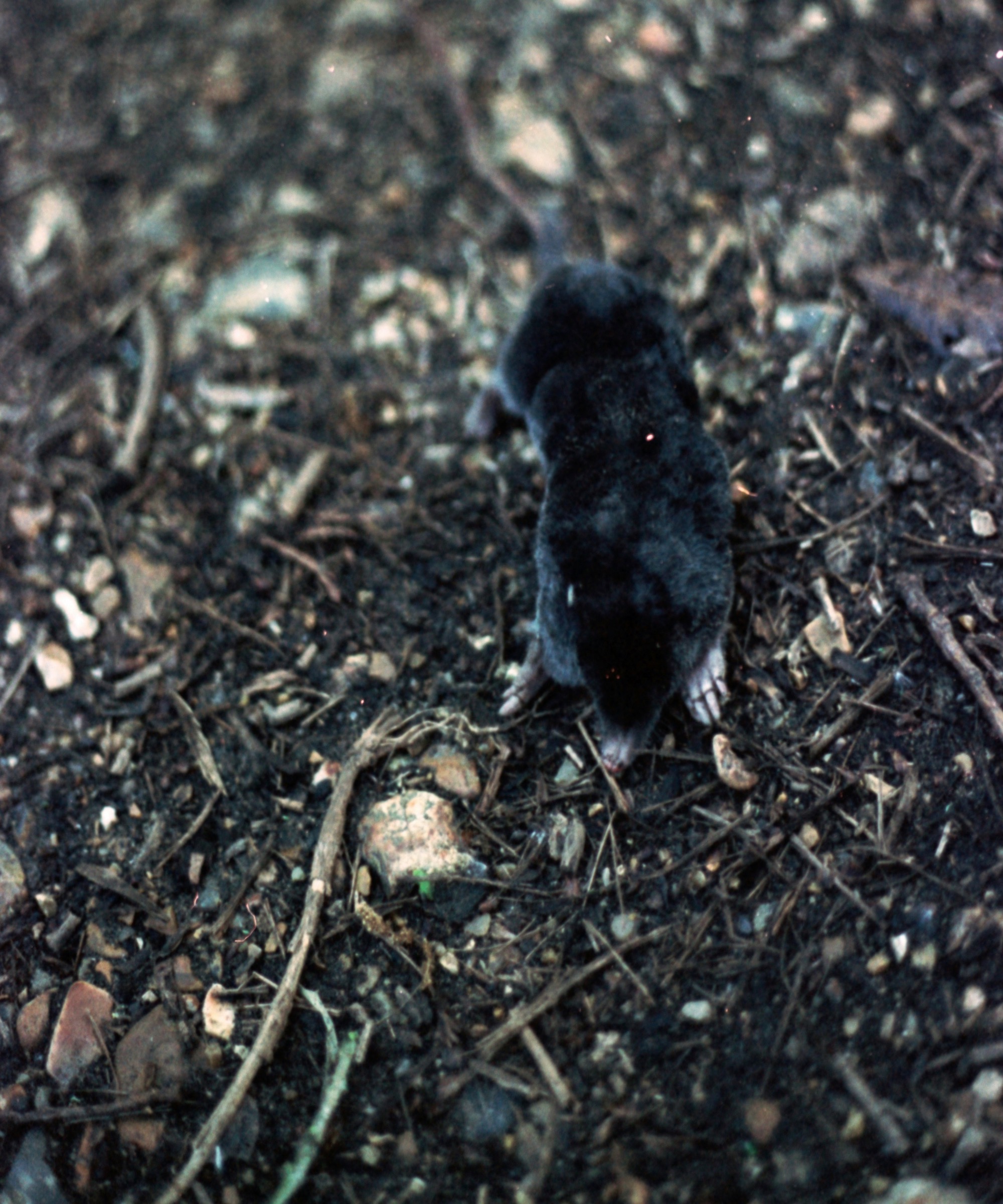
If a mole is using your yard as its personal pantry, getting rid of some of its preferred insect treats may persuade it to move on to somewhere that offers richer pickings.
A good way to do this is by introducing beneficial garden nematodes, also known as roundworms, to your plot. These tiny, harmless parasites that can combat a variety of pests that moles love to feed on, but crucially leave earthworms, which are essential for maintaining healthy soil ecosystems, alone.
It is important to select the right nematodes when applying them to your garden, as some varieties can damage plant matter.
You can also create your own homemade bug spray to spritz on surface insects. While this doesn't remove soil grubs, it will still further reduce a mole's food options and may encourage it to forage elsewhere.
2. Discourage them with clever planting

What do marigolds, daffodils and alliums all have in common, apart from bringing lively bursts of brightness to your flower beds? Moles hate them!
‘Certain plants emit smells that naturally repel moles,’ says Jason Keeley, a professional gardener and founder of Mowing Magic. ‘Planted strategically, they can help deter mole activity without chemicals.’
These plants are non-toxic alternatives to the ‘mole plant’ or castor bean, which flourishes on the west coast and is often grown as an ornamental because of its colorful foliage. Its scent is reputedly off-putting to moles, but its seeds are also highly toxic, so must be planted with caution.
Marigolds are a particularly useful pest-repellent plant, producing a pungent fragrance that dissuades moles from making themselves at home. They are also fantastic for companion planting, so your fruit and veg will benefit from their presence, too.
Spent coffee grounds worked into the topsoil, or turned into compost and sprinkled in and around the tunnels, will release a pungent aroma that can also act as a deterrent.
3. Rehome the mole
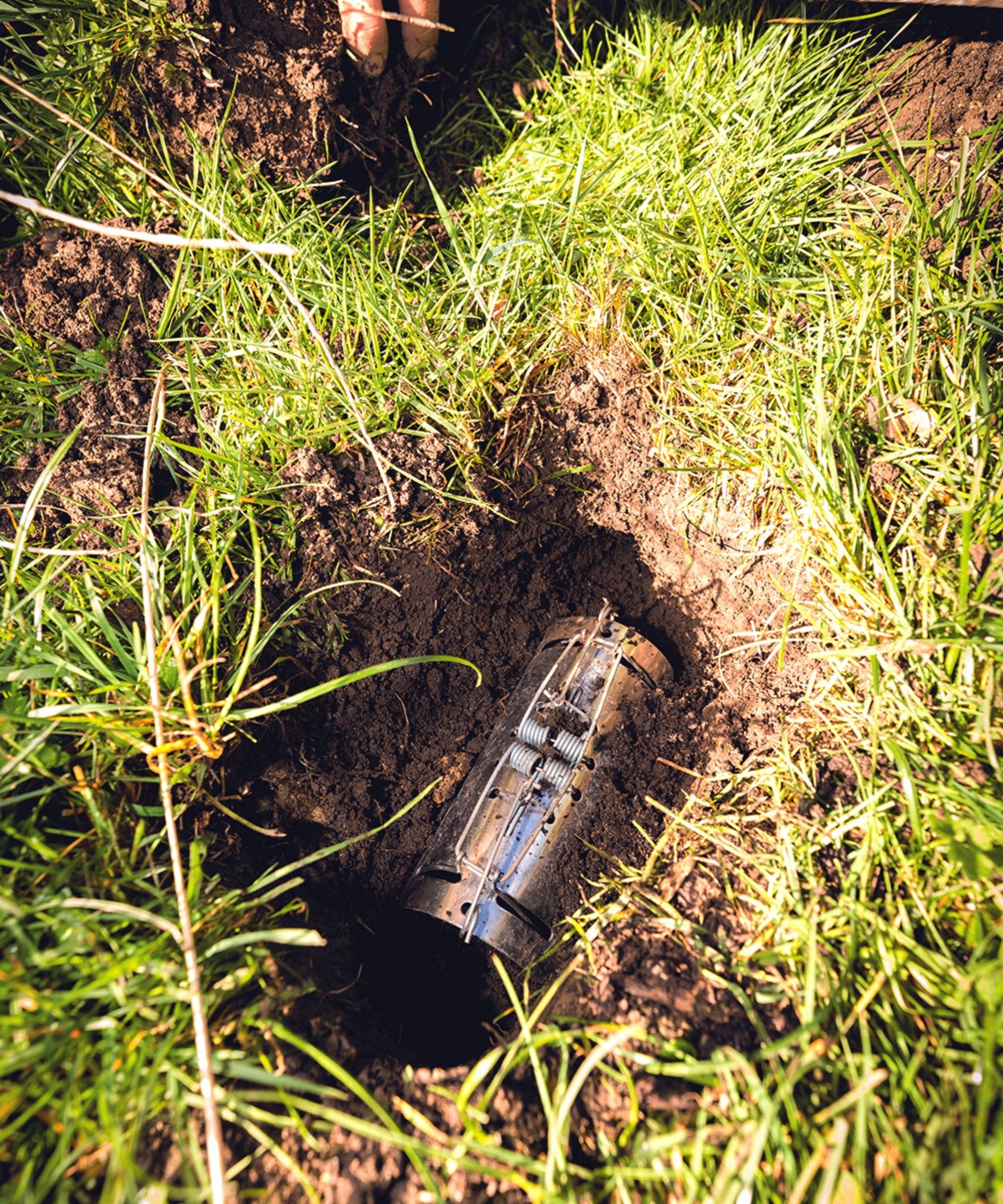
Moles primarily live underground, digging tunnels with their spade like paws and hunting for food. This makes them trickier to catch as they seldom come to the surface. But trapping them and releasing them far from your yard is the most effective way to ensure they have moved on.
The first step is to determine the active runway the mole is using. This can be done by poking holes in the top of a tunnel and keeping an eye on it - you can use anything to do it, such as this garden trowel from Lowe’s. If the hole is repaired within one to two days, you have found an active tunnel.
Placing a humane trap, like this one from Amazon, in the tunnel should allow you to safely trap your furry miner, then carry them a good distance away. Choose a woody, shaded area to release them in as they will thrive in this environment and will be unlikely to return to their former home.
4. Introduce good vibrations

Another easy method to deter moles without harming them is by using a solar sonic mole repellent (from Target). These spiral spikes can be driven into the soil where they use ultrasonic pulses to simulate seismic waves, fooling the mole into thinking another animal is digging in the yard.
Because moles are generally solitary creatures, the implied threat of another animal in their space, or even a predator looking for a tasty meal of mole, should be enough to encourage them to find a new neighborhood to live in.
Continued use could prevent other moles from exploring the potential of this grassy plot.
5. Make the space inhospitable
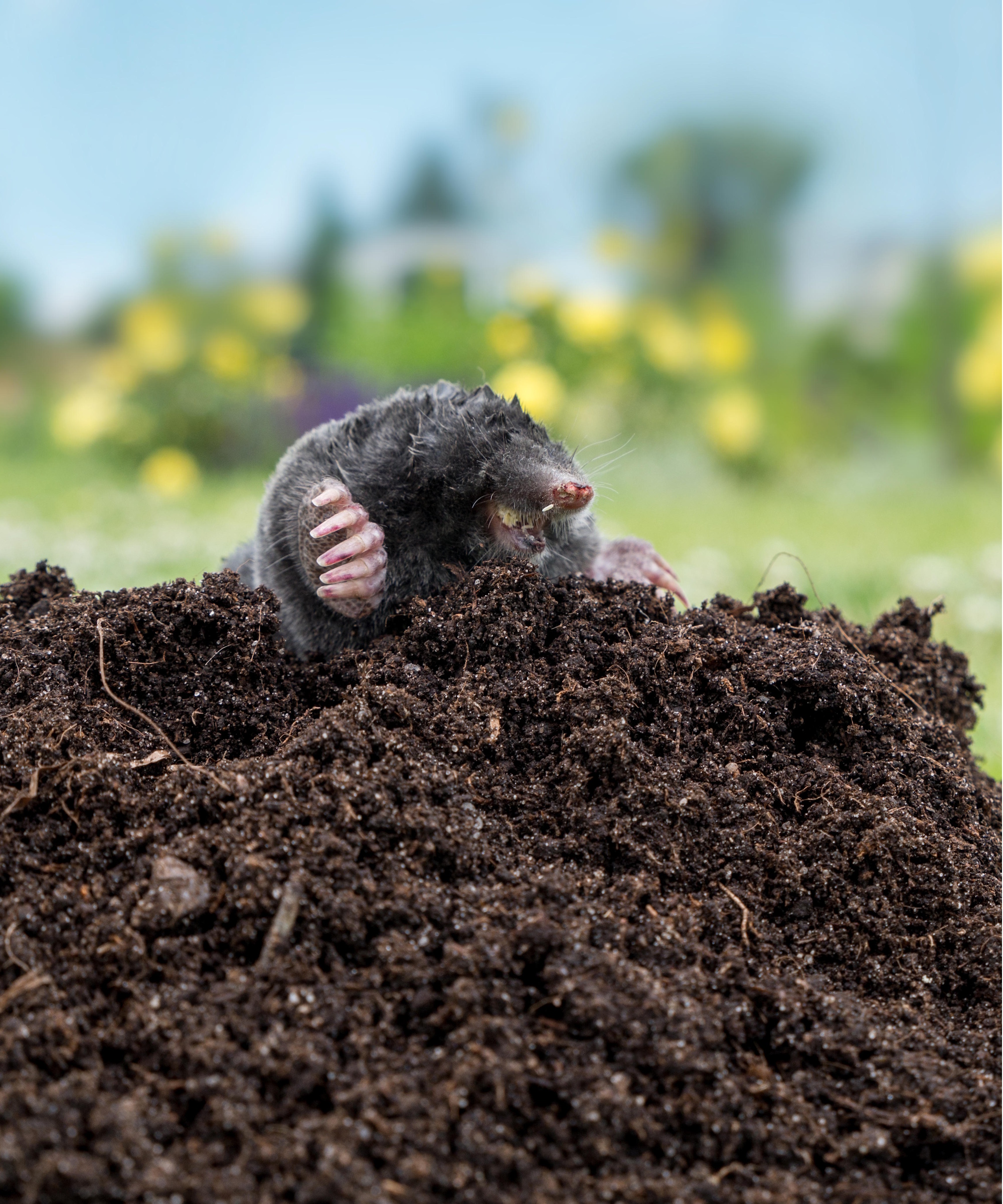
There are ways of maintaining your lawn which can actually make it less attractive to moles. The grubs that they like to eat are attracted to compacted soil, so keep it well aerated.
Be careful not to overwater the ground as sodden soil brings all the worms and grubs to the yard, pursued by moles. A thorough watering once or twice a week instead of a daily sprinkling will let the top few inches dry.
And finally, keeping your lawn neatly trimmed will make it harder for them to tunnel unseen, so you can take action at the first sign of an underground invader.
6. Stop them in their tracks
‘Moles hate running into roadblocks, so try burying a 12-inch deep physical barrier,’ says Nicole. ‘Dig down and use hardware cloth around garden beds.’
An underground fence made using materials like this galvanized steel chicken wire mesh from Walmart will frustrate the mole and prevent it from reaching areas where it will find its favorite foods.
7. Encourage natural predators

Call on other wildlife to protect your turf, advises Jason. ‘Owls, hawks, and even foxes can naturally control mole populations. Installing owl nesting boxes or encouraging habitat for predators (like brush piles) creates a balanced backyard ecosystem.’
The moles have highly developed senses of smell and touch to compensate for weak eyesight and hearing, so picking up on the scent of predators, or feeling the vibrations of their movement could prompt them to seek safer ground.

As the founder of Virginia-based Mowing Magic, a company dedicated to smart, sustainable lawn care solutions, Jason is an expert in knowing how to keep grass looking lush and unmarked by burrowing creatures.
Methods to avoid
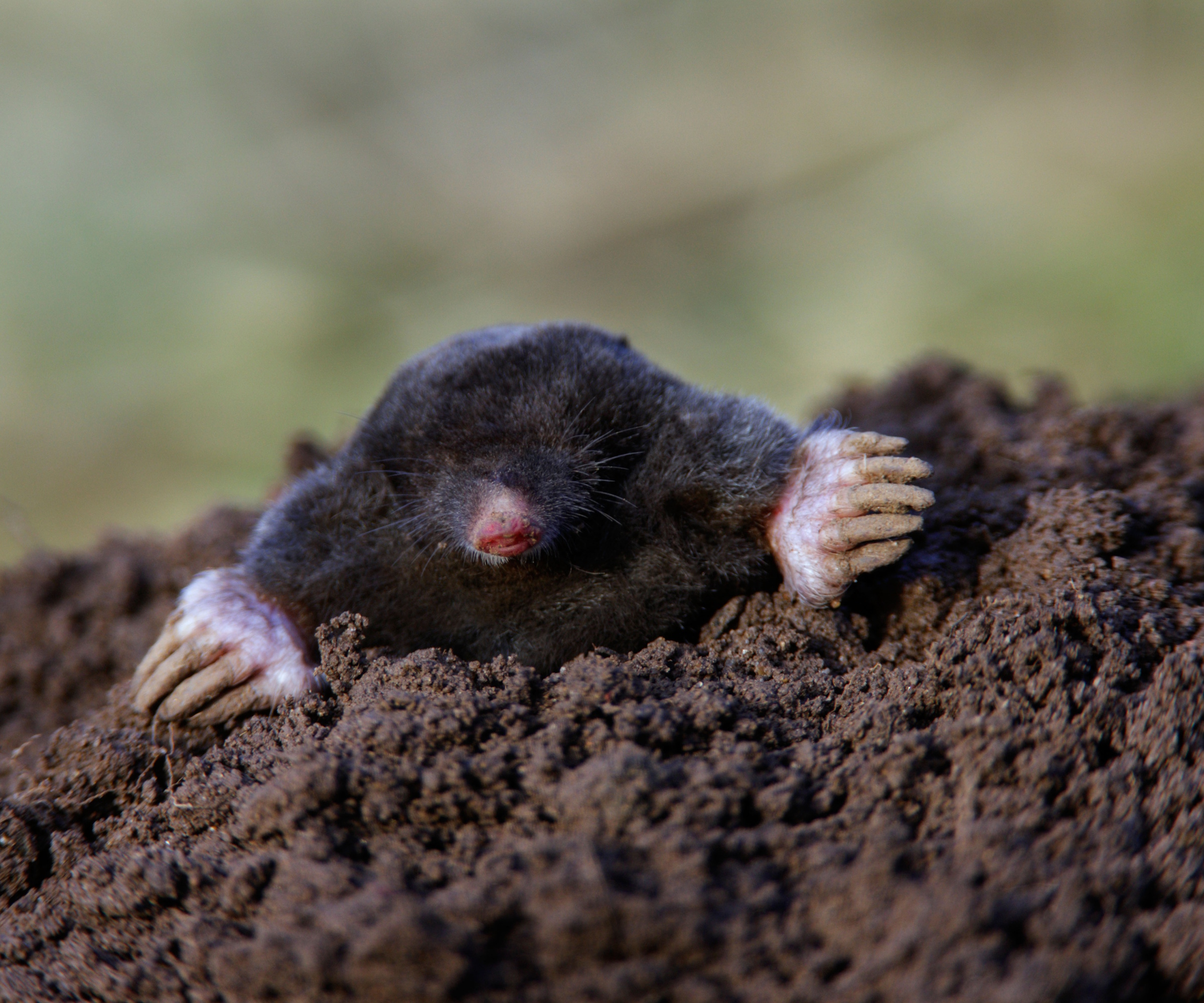
There are some common methods used to get rid of moles that are neither humane nor effective, so are best avoided.
This includes using castor oil. This home remedy is supposed to deter moles due to its strong, distinctive smell, however there is some debate over how well it works.
Castor oil will also upset the moles digestive system and irritate their skin. Causing them to suffer isn’t a humane way to dissuade them from your yard.
Planting mothballs in the ground is also something we definitely do not recommended as a way of combating moles, not least because they will get used to the pungent smell over time and just dig alternative tunnels.
Mothballs are a solidified form of pesticide and work by deteriorating slowly and releasing pesticides in gas form, making it likely that they will cause more harm to the plants you are trying to protect.
Is it a mole in the hole?
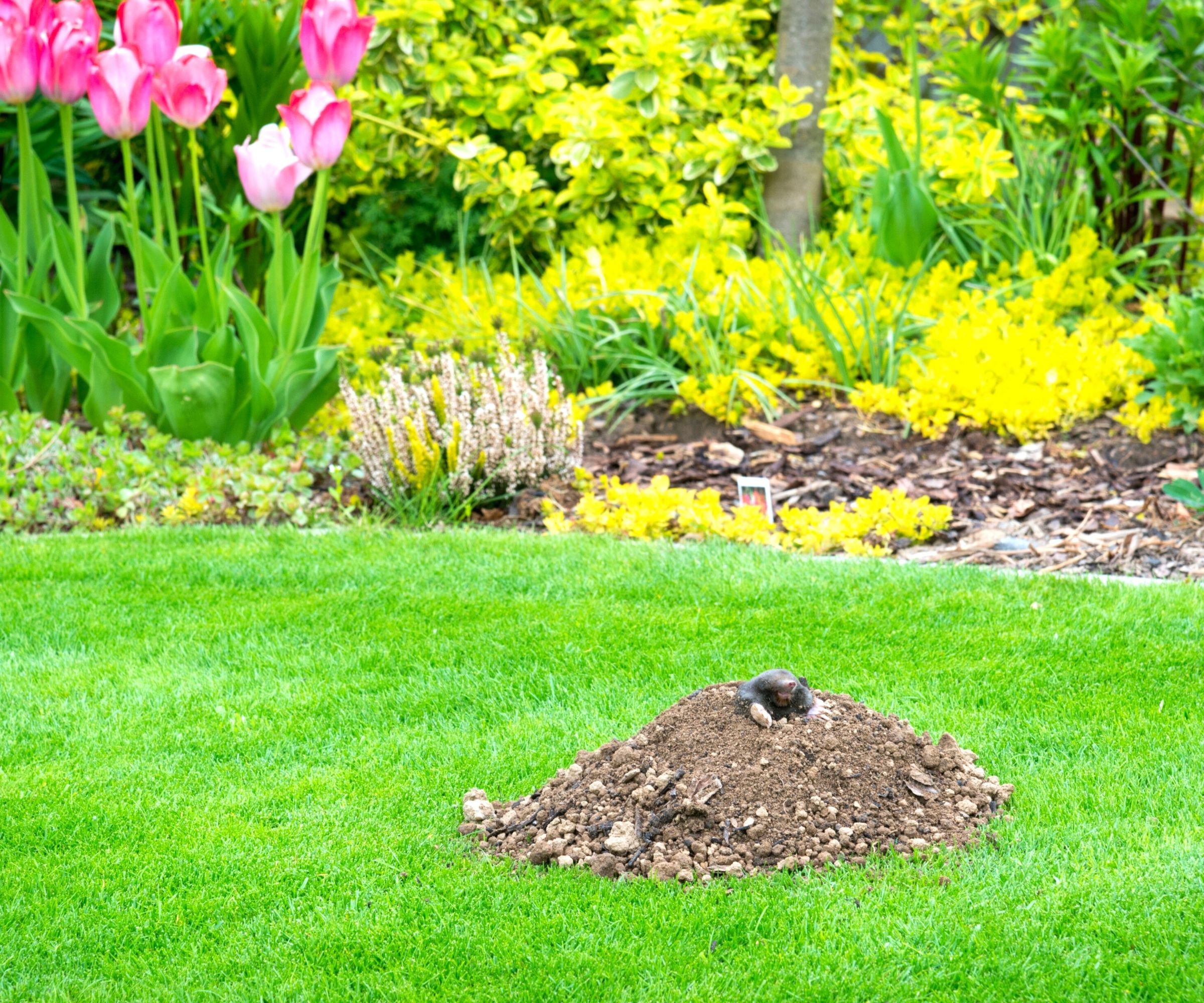
Moles are common spring garden pests, but there’s also a chance the cause of the havoc being wreaked on the lawn is another, similarly named creature – the vole.
Also known as meadow mice or field mice, voles are actually rodents. They are herbivores who survive on grasses, seeds, roots, bulbs and occasionally bark, whereas moles are omnivores.
‘Sometimes moles and voles can be present in the same yard,’ explains Megan Wede of Done Right Pest Solutions. ‘Moles dig tunnels underground, and you'll know if you have current mole activity by stomping down all of the raised tunnels in your yard and waiting for new ones to pop up. If more tunnels are dug a few days later, you have mole activity.
‘Voles can use mole tunnels, but they usually create straight little trails in the grass above ground. Voles eat plant roots and grass roots, so both moles and voles are signs of a healthy yard, but these pests can certainly be annoying.’

Megan works with Done Right Pest Solutions, who operate in the Twin Cities metro area MN. Specializing in multi-family housing pest control and residential pest control, they also offer advice on dealing with moles.
FAQs
What brings moles to your yard?
Moles are insectivores and burrow to feast on a variety of grubs such as earthworms, ants, and crickets. They require quite a lot of food to survive and can therefore dig immense tunnels and holes in your yard in search of insects in very short periods. A high insect and grub population in your soil will attract moles to your yard. Moles will not tend to leave an area on their own until their food source runs out.
Summer should be the time when your yard is looking its best and your fruit and vegetable beds are bursting with signs of growth. But watch out for pests that can attack them before you get a chance to harvest it. Follow our guide on pests that can destroy plants and what you can do to stop them.

Alison is a contributing gardens writer for Homes & Gardens, writing on a range of topics from plant care to garden design. She has recently landscaped the outside space of her Victorian home, replacing crazy paving and cracked slabs with new lawn, and is currently cultivating a fruit bed.
- Chiana DicksonContent Editor
